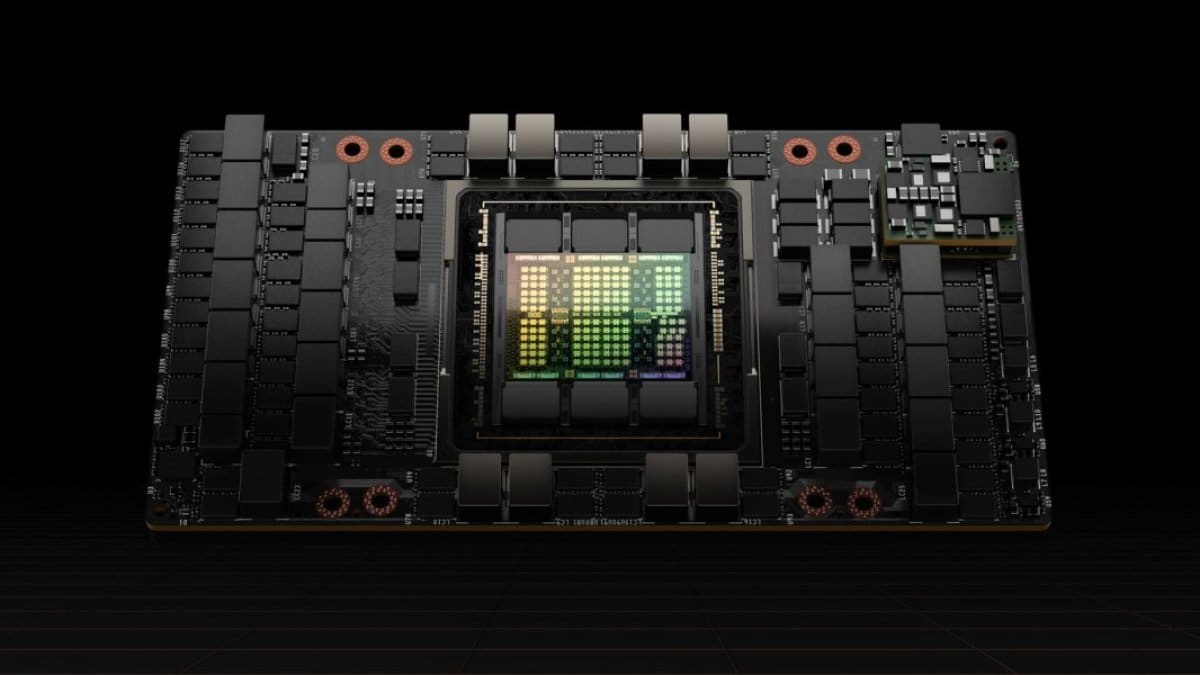The American tech company also launches a new AI GPU specifically designed for the Chinese market.
In an unexpected turn in the tense tech relations between the U.S. and China, NVIDIA has made a significant breakthrough by announcing the imminent resumption of sales of its H20 GPU in China after a series of discussions with senior U.S. government officials, including a key meeting between CEO Jensen Huang and former President Donald Trump at the White House.
The company has confirmed that it has formally submitted a request to restart marketing the H20 GPU, which was created to comply with U.S. export restrictions. NVIDIA assures that it has received guarantees from U.S. authorities that it will soon get the necessary approval, allowing shipments to resume “shortly.”
This development is a major relief for NVIDIA, which had to provision up to $5.5 billion (about €5.1 billion) in its first fiscal quarter of 2026, ending April 27. This amount was related to inventory write-downs, purchase commitments, and reserves associated with the H20 chip, following the enforcement of an indefinite export license that, since April 9, had blocked any shipments of the processor to China.
Additionally, the company had completely removed the total addressable market (TAM) of Chinese origin from its forecasts, committing to treat any residual revenue in that country as a “non-recurring extraordinary benefit” rather than a reliable basis for future estimates.
New RTX PRO GPU for China
Along with the announcement of the sales restart, Huang also revealed the launch of a new GPU dedicated to the Chinese market: the RTX PRO, a variant designed to meet current regulatory requirements and described by the company as “ideal for AI digital twin applications in smart factories and logistics.”
The development of this new GPU demonstrates NVIDIA’s willingness to continue operating in China despite increasingly strict restrictions imposed by the U.S. government on exports of advanced technology, especially in artificial intelligence and high-performance data processing.
U.S. as a Tech Hub for Global AI
During his media appearance in Washington D.C., Huang emphasized the importance of maintaining U.S. technological leadership in AI:
“Foundational models and open-source research are the pillars of AI innovation,” the executive said. “We believe all civilian models should perform better on the U.S. tech stack, encouraging nations to choose America,” he added.
These statements come at a time when NVIDIA continues to expand aggressively worldwide. A recent UBS report estimates the company has visibility into an unprecedented $1.5 trillion in future data center revenues. This aligns with the company’s remarks during its first quarter fiscal results presentation, where it mentioned having identified “tens of gigawatts” in AI infrastructure projects.
A New Chapter for NVIDIA in China
The U.S. decision to give NVIDIA a new operational margin in China is not only a business victory but also a geopolitical turning point in the tech war between the two powers. After months of sanctions, export controls, and escalating tensions over AI leadership, the return of H20 chips to the Chinese market may provide a respite, at least temporarily, in the Washington-Beijing standoff.
For NVIDIA, this presents a second chance to leverage its chip design strategy tailored to specific regulations, while also aiming to maintain its global dominance in an increasingly strategic and competitive industry.

